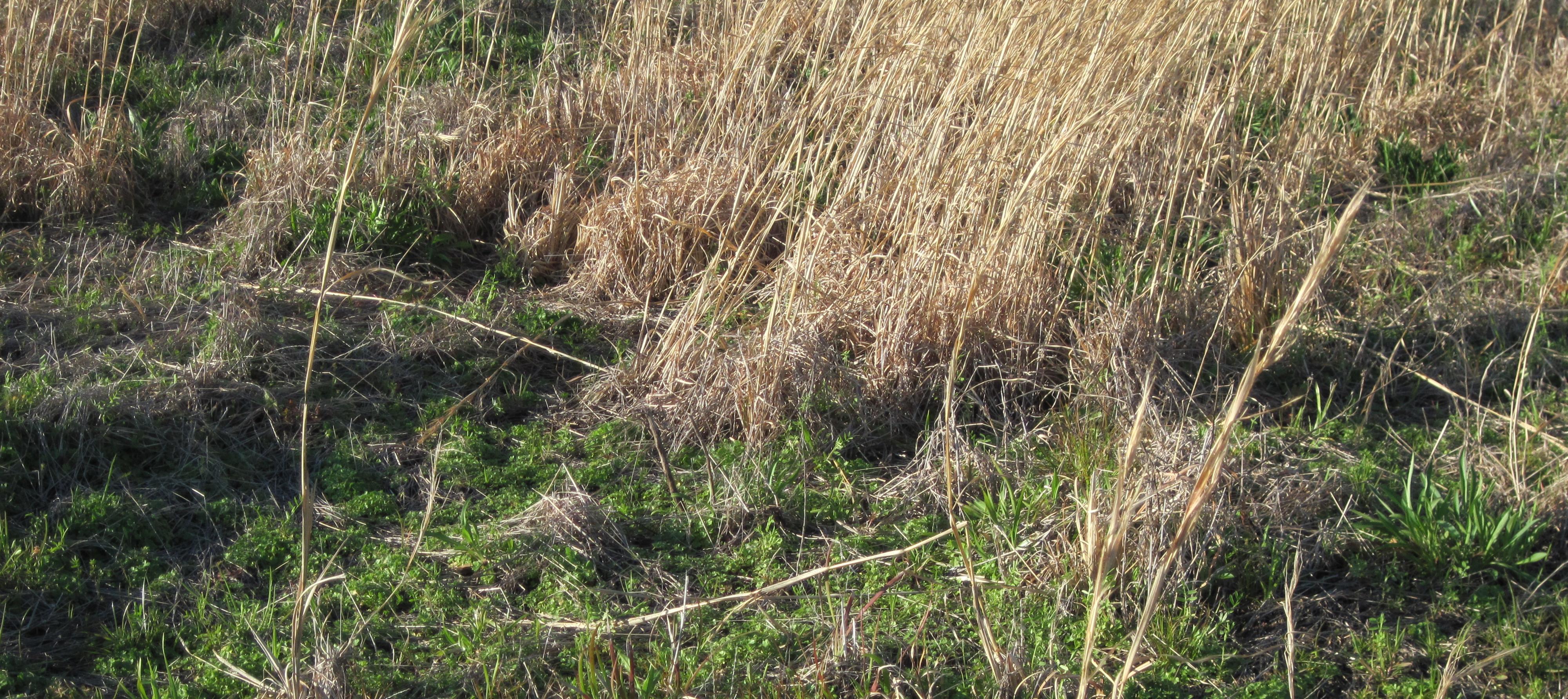
Broomsedge in Pastures
Broomsedge, which is actually a native grass and not a sedge, has become more prevalent in many pastures in the eastern United States in recent years. This is undesirable, because this plant provides relatively little nutritional value to livestock. Even worse, it competes with desirable plants for nutrients, water, sunlight, and space.
Reasons for Encroachment
It is commonly believed that the soil in any area infested with broomsedge is low in fertility and/or has a low pH. While this usually is the case, it is not always so. Broomsedge establishment and persistence are also greatly affected by defoliation intensity (the frequency and closeness of grazing and/or clipping), of which this plant not highly tolerant.
Livestock will consume immature growth of this weedy grass, but it becomes increasingly unpalatable as it matures. Eventually it becomes so fibrous that animals will refuse it under almost any circumstance. This characteristic allows it to most easily become established when pastures are undergrazed in spring and early summer but grazed closely thereafter.
When this happens, young broomsedge plants (which would have been weakened by grazing and had more immature leaf growth if spring and early summer stocking rate had been higher) can reach the stage of growth at which they become highly unpalatable. This results in increased grazing pressure on improved forages in the pasture and no grazing pressure on broomsedge, which is an enormous competitive advantage for the latter.
Historical Precedent
Work done at the Middle Tennessee Experiment Station in the 1920’s provided much insight regarding broomsedge. In a test at this location, application of 200 pounds/acre of nitrate of soda or 150 pounds/acre of ammonium sulfate, together with grazing and two or three clippings annually reduced broomsedge stands from 90% ground cover to less than 5% in four years.
These experimental results were corroborated by observations of the effects of grazing and fertilization on some 400 acres of permanent pasture on the station. Pastures that were kept grazed closely in spring and early summer for several straight years had little broomsedge remaining, while in other pastures where lax grazing had occurred, populations increased despite good fertilization.
Management Options
Slection and use of well-adapted, vigorous forage species and varieties is helpful in keeping broomsedge from becoming established in the first place. Once a good stand of forage crops has been obtained, regular soil testing followed by application of any recommended fertilizer and lime will, in most cases, keep broomsedge out.
Where a pasture has been invaded by this grass, taking a soil test to determine the soil nutrient and pH status should be the first step. As evidenced in the Tennessee work discussed earlier, doing nothing other than proper liming and fertilization of a pasture will likely reduce a broomsedge population, although it may be a slow process.
As shown by the Tennessee work, the other management tool is to intensify grazing and/or clipping management. In particular, a “spring undergrazing-summer overgrazing” situation should be avoided. The greater extent to which pastures are grazed and/or clipped without damaging defoliation tolerance limits of improved forages, the more difficult it is for broomsedge plants to be competitive.
No herbicides are labeled for selective removal of broomsedge from pastures, but spot spraying or roller bar application of a non-selective herbicide can be helpful in some situations. However, the key to broomsedge control is management that ensures desirable forage plants have a competitive advantage.
Foraging Ahead is a column presented by Ragan and Massey and written by Dr. Don Ball, Professor Emeritus at Auburn University. Dr. Ball is one of the authors of Southern Forages, available here.